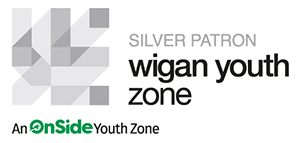A quick-look guide to help businesses make their marketing accessible to all.
Much of print marketing materials produced by UK businesses are not produced with accessibility issues in mind; often using fonts, layouts, and colours that are harder to read for the estimated 21 million Brits who experience dyslexia, colour blindness, significant visual impairments, dementia or poor basic literacy – that’s a lot of potential customers who may be put off by your print marketing!
In the last of this series, we share the easy ways you can review your print marketing to improve its accessibility resulting in your messages reaching a wider audience:
Choose your words carefully
Simple use of English will ensure readers understand what you’re saying but it’s especially important when considering accessibility. Avoid jargon and write in a way that someone with no prior knowledge or understanding of your subject will understand.
To avoid challenges with focus, keep things short. This will also help the reader to retain the information. Try to keep each line to a maximum of 70 characters, using a separate paragraph for each point. Bullet points are also good to break up text.
Pick your paper wisely
Some paper can really affect the readability of potential customers with a disability. This is why it’s important to choose the finish. Gloss paper can be too reflective so print on non-glossy paper which is suitably thick.
Low paper weights can show through on the other side and can also be too flimsy to hold. Consider using light coloured paper – off white is best – and make sure it’s a matte finish.
Think about the fonts
Fonts are especially important on the readability of a document. Make the text easy to read by ensuring it is clear and bold with no clutter by using large print with lots of contrast. Don’t make it too small: 12pt is the absolute minimum recommended, with 14pt being advisable.
Use bold print and avoid italics – italics are not accessible for people with visual impairments or dyslexia: almost two million people in the UK live with sight loss and 10% of the population have dyslexia.
Some of the most effective fonts to use are Ariel, Geneva, Calibri and Tahoma, known as the Sans Serif fonts.
Colour selection
Choosing the right colours for your print marketing is important for ease of reading as well as helping your readers to navigate the document. For example, labelling in red can help to draw a reader in and can pin point important information. The general rule of thumb though is to ensure that the colour is a good contrast to that of the paper in order to make the text is seen against the background.
Effective design
The layout and design of print marketing shouldn’t be forgotten and can be the difference between the information on the printed materials being understood, or not.
Headings that are clear and descriptive are useful and will help readers to navigate through material. The spacing between words is also important, especially for someone who may have dyslexia.
Government guidelines state that all content should be left aligned, this being the easiest to read – as the left margin is fixed it makes the beginning of each line consistent, making less work for the readers’ eyes.
Lastly, don’t be afraid of ‘white space’ – especially helpful for those with low vision but also those with cognitive disabilities. It helps to improve the visual layout as well!
For a free review of the accessibility of your print marketing, contact Jackie at Jackie.salt@attain.uk.com or 01942 247884



